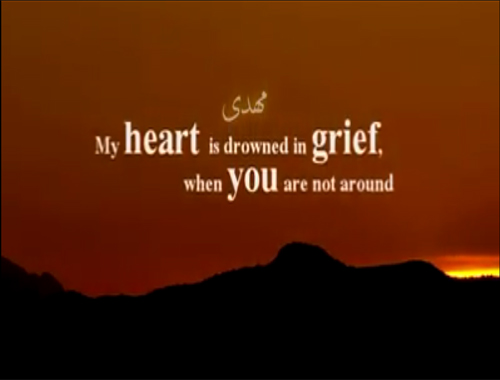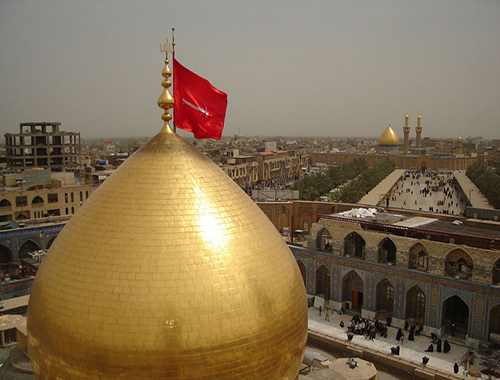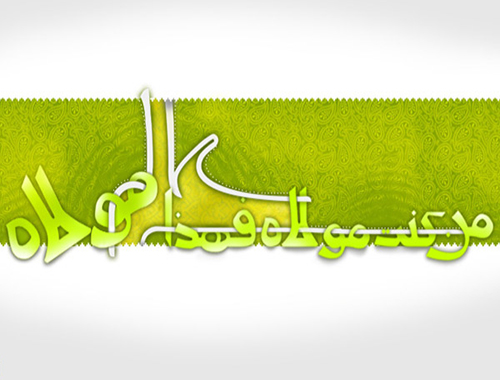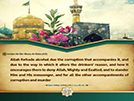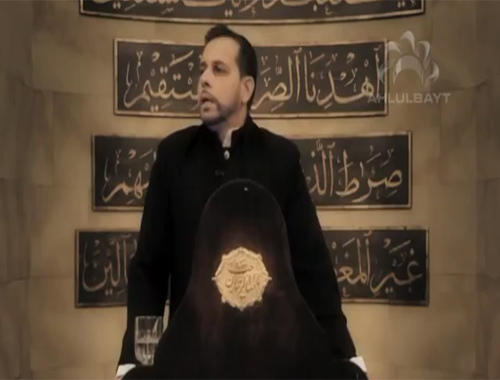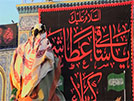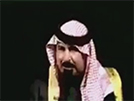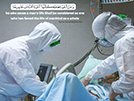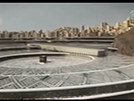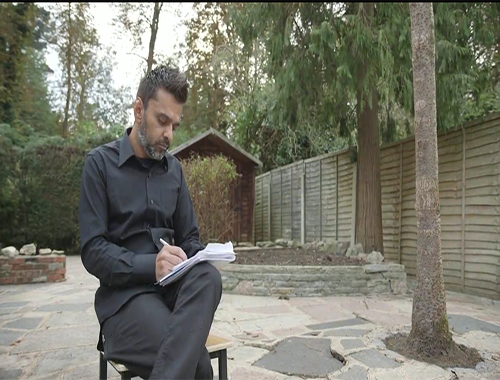Al-Kashmiri voyage (1154- 1154)
- Details
- Hits: 3102
Al-Kashmiri voyage (1154- 1154)
Abdul Karim Bin Khawajah Akebat Mahmood Bin Khawajah Muhammad Retha Al-Kashmiri was residing in Jahan Abad (Delhi) when Nadir Shah Afshar launched a military attack against India. He was for a long time determined to visit the holy mosque in Mecca and the graves of grand religious scholars. The person that was in charge of ministerial affairs took him to Nadir Shah who promised to send him to Mecca.
Abdul Karim accompanied Nadir Shah’s caravan from India to Quazween in Iran, there Abdul Karim got the permission from Nadir Shah to travel to Mecca. Here is a brief of that voyage:
When Abdul Karim returned to India his friends invited him to record some of incidents and events of that holy trip in details. Abdul Karim wrote a book in four chapters and an introduction in a book titled “statement of facts”.
The first and second chapters of that book elaborate the circumstances that surrounded Nadir Shah, while the forth chapter dedicated to the Mongolian Sultan Muhammad Shah and other strange things and anecdotes!
The third chapter of the book (page 125-158) covers a report about Iraq, Sham and Hijaz. In fact this chapter concentrates on his Hajj voyage.
The following is a brief of the third chapter from the book “statement of facts. At the beginning we chose from the second chapter (page 197- 101)
“Character of holy Mashad, then we chose Hajj voyage (page 111-158)”.
Character of holy Mashad:
Mashad city is full of peculiarities; its walls in contrast to other castles have triangle shape, so if one guard tower is attacked by enemies all guard towers can extend hand of assistance to that one which has been attacked.
The holy shrine of the eighth Imam Ali Bin Moses Al-Ritha (pbuh) centralized the holy city of Mashad, and the blessed dome is one of the most distinguished seen in the city. Most of mosques and buildings are spacious.
On the both sides of the holy shrine there are big gates and a market on the Western side near the royal palace. There is a river that crosses the city and the market ending at the courtyard of the holy shrine.
In the holy shrine there are three tombs, the bigger one is made from steel and inlaid with jewelers, the second tomb is covered by pure gold from inside while the third one which is the blessed grave of Imam is made from sandalwood.
Authors’ vision:
Prior to my entry to the holy city of Mashad, I dreamt of Imam Retha (pbuh) wearing a black dress and sitting outside the holy shrine surrounded by numerous individuals, I approached him and paid respect to my Imam then he invited me to a table full of various kinds of food, Imam said in Persian language: “Have some food, don’t worry you shall get what you want very soon”!
What I wanted that time was the honor in visiting he grand Prophets and Imams in particular the master of all human beings and the dear of almighty God and the intercessor of sinners and the seal of the Prophets Muhammad (pbuh), that demand seemed arduous at that time!
Next morning I asked some of Mashad’s inhabitants about the situation and the holy shrine; it seemed that it was the same as I saw in my dream, and what a surprise it was for me!!
I asked permission from Muhammad Naeem Al-Mashady, the old man with whom I stayed for a while, I reached Mashad three days prior to the army. Whatever I saw in the holy city was precisely as what I saw in my dream!
I stayed there for forty two days; I used to leave the office with different excuses in order to go to the holy shrine for reciting the holy Koran with eagerness!
Later I accompanied Mr. Alawi Khan King’s representative in my journey to Hijaz.
On the sixteenth of the lunar month the first Rabea year 1154 we left Quazween heading for Hamadan, we reached it after seven days, and from there we went to Baghdad through “Tooysarkan” and “Kermanshah”.
On the fifth day we stopped at a guest house near Bastoon Mountain, and on the twenty fifth of the same month we arrived at “Kermanshahan”
Which inhabitants were Zankanah Kurds, and from there we headed towards “Ghilanak” which is considered the most remote Iranian point on the border and located on the versant of “Allah Akbar” Mountain.
The weather from “Ghilanak” to Baghdad was very hot, while inside Iran was too cold, and the terrain was rough and mountainous.
We crossed the road from “Ghilanak” to Baghdad in four days; eventually we entered Baghdad Dar Al-Salaam (peace).
Baghdad:
Baghdad is a huge city and full of big buildings, Tigris River crosses the city and divides it into two parts, old Baghdad and new Baghdad.
The old part of the city lacks fence and is located on the Western side of the river while new Baghdad is located on the Eastern side of it. All villages are far from the river.
The palace of Persian emperor that cracked and collapsed on the eve of birthday of the grand Prophet Muhammad (pbuh) still remaining 18 kilometers out of Baghdad, the distance from that palace and Tigris River is about 355 steps only.
The holy shrine of Kazimain:
The holy shrine of Imam Moses Al-Kathem and Imam Muhammad Al-Taki (pbut) are located in a suburb of Baghdad called Kazimain to the West of Tigris River.
The grave of Abu Hanifah Al-Koofi:
The distance from Baghdad to the grave of Al-Koofi on the Eastern side of the river is around a mile and half, and the same distance from old Baghdad to Kazimain, those two Imams (pbut) are buried under one tomb, their holy shrine is one of the most beautiful shrines I have seen! There are other graves located between old Baghdad and Kazimain such as Sheikh Maaroof Al-Karkhy whose grave has a tomb and its servants are in good shape the same as Kazimain and Abu Hanifah shrines’ servants.
Sheikh Jonaid Al-Baghdady and Serri Al-Sokty are buried under one tomb, the door of the shrine is always closed, the same as the shrine of Mansoor Al-Amiry and Sheikh Dawood Al-Taey, while Bahlool Al-Akel and Mansoor Al-Hallaj’s shrines although have been built in a very nice style but they lack servants and haven’t been renovated!
New Baghdad is more harmonious and full of big buildings from the old part of the city; it embraces a number of well-known religious scholars such as:
The grave of Sheikh Abdul-qader Al-Ghilani and his mosque which are a master piece in construction’s art and the grave of his son Abdulrazzak, in addition to the grave of Sheikh Shahabaldean Al-Sohrwardy (at God mercy), the distance between the two graves is equal to two horse racetrack!
There are some graves for other religious persons located outside the castle such as: Bisher Al-Hafy, Al-Khateeb Al-Baghdady and Al-Shibly, these graves’ tombs are small and their doors are always closed, but with a little tip the servant there may open the door!
After getting the honor of visit to those shrines we headed for the holy city of Karbala.
Our first stop was in a place called Khan Al-Morr that lacks potable water, and then we arrived at Mosaieb town on the Euphrates River. Here, there are two graves for two kids of Akeel Bin Abi Taleb who were martyred by the criminal Al-Hareth, their shrine has a small tomb and it is three miles away from river’s estuary.
The holy city of Karbala
On the third day we arrived to the blessed city of Imam Hussein (pbuh) where conspicuous and internal diseases are being cured! The distance from Baghdad and Karbala is around 45 miles; the city is big and populated due to the influx from Iranian citizens who sought refuge there escaping from the oppression and tyranny of their rulers!
The other factor for flourish of the city is the water that was carried to Karbala by Baghdad’s ruler Hassan Basha, that project cost him ten thousand Tooman which was equivalent to one million Indian Rupees. Unfortunately, Hassan Basha passed away prior to the termination of the project, then Mirza Ashraf Jahan one of Shah Tahmasb assumed the responsibility.
The blessed tomb for Imam Hussein (pbuh) centralizes the holy city, while Abdullah Bin Hussein’s grave is located near his father’s feet, and the martyrs’ corner beside the Imam (pbuh). A servant is standing near the grave presenting some sand of the grave in lieu of some money; this sand which is being sent to the entire world has a miracle effect in curing different diseases and curbs their strength.
There is also the shrine of Abbas the son of Ali Bin Abi Taleb (pbuh) and the shrine of Al-Horr three miles far of it, in addition to his mother’s grave that objected to him being with Imam Hussein (pbuh) in Karbala battle.
An individual must cross thirty six miles in an arid desert to reach Najaf holy city from Karbala, and from Hillah city and Tha Al-Kifil village to Najaf about forty eight miles.
Hillah city:
Hillah is a thriving city located on Euphrates River, the grave of the Prophet Ayoob (pbuh) is one mile and half far of it and his wife’s grave is located beside it, not far from the Prophet’s grave there is a spring that poured to the Prophet Ayoob (pbuh) by almighty God, that verse was mentioned in the holy Koran as follows:
“Run with your legs, this water is for your bath and to quench your thirst”!
There is also the grave of Prophet Shoaib (pbuh) outside the city; the grave is located inside prayer niche in a mosque bears Prophet’s name.
From Hillah city we went to visit Tha Al-Kifil, his successors were four persons they are buried there also, their buildings differ from others’ in beauty.
Arriving at the holy city of Najaf:
Almighty God made the soil of Najaf kohl for eyes, thanks to him, many thanks to him!
Najaf is less populated than Karbala due to lack of agriculture and water, but its inhabitants are contented, you must be careful when you go outside the fence of the city due to the threats from Bedouins’ attacks!
The tomb of Imam Ali’s shrine is another spectacular seen in the center of the city. His grave is covered with gold.
When Abdul Karim returned to India his friends invited him to record some of incidents and events of that holy trip in details. Abdul Karim wrote a book in four chapters and an introduction in a book titled “statement of facts”.
The first and second chapters of that book elaborate the circumstances that surrounded Nadir Shah, while the forth chapter dedicated to the Mongolian Sultan Muhammad Shah and other strange things and anecdotes!
The third chapter of the book (page 125-158) covers a report about Iraq, Sham and Hijaz. In fact this chapter concentrates on his Hajj voyage.
The following is a brief of the third chapter from the book “statement of facts. At the beginning we chose from the second chapter (page 197- 101)
“Character of holy Mashad, then we chose Hajj voyage (page 111-158)”.
Character of holy Mashad:
Mashad city is full of peculiarities; its walls in contrast to other castles have triangle shape, so if one guard tower is attacked by enemies all guard towers can extend hand of assistance to that one which has been attacked.
The holy shrine of the eighth Imam Ali Bin Moses Al-Ritha (pbuh) centralized the holy city of Mashad, and the blessed dome is one of the most distinguished seen in the city. Most of mosques and buildings are spacious.
On the both sides of the holy shrine there are big gates and a market on the Western side near the royal palace. There is a river that crosses the city and the market ending at the courtyard of the holy shrine.
In the holy shrine there are three tombs, the bigger one is made from steel and inlaid with jewelers, the second tomb is covered by pure gold from inside while the third one which is the blessed grave of Imam is made from sandalwood.
Authors’ vision:
Prior to my entry to the holy city of Mashad, I dreamt of Imam Retha (pbuh) wearing a black dress and sitting outside the holy shrine surrounded by numerous individuals, I approached him and paid respect to my Imam then he invited me to a table full of various kinds of food, Imam said in Persian language: “Have some food, don’t worry you shall get what you want very soon”!
What I wanted that time was the honor in visiting he grand Prophets and Imams in particular the master of all human beings and the dear of almighty God and the intercessor of sinners and the seal of the Prophets Muhammad (pbuh), that demand seemed arduous at that time!
Next morning I asked some of Mashad’s inhabitants about the situation and the holy shrine; it seemed that it was the same as I saw in my dream, and what a surprise it was for me!!
I asked permission from Muhammad Naeem Al-Mashady, the old man with whom I stayed for a while, I reached Mashad three days prior to the army. Whatever I saw in the holy city was precisely as what I saw in my dream!
I stayed there for forty two days; I used to leave the office with different excuses in order to go to the holy shrine for reciting the holy Koran with eagerness!
Later I accompanied Mr. Alawi Khan King’s representative in my journey to Hijaz.
On the sixteenth of the lunar month the first Rabea year 1154 we left Quazween heading for Hamadan, we reached it after seven days, and from there we went to Baghdad through “Tooysarkan” and “Kermanshah”.
On the fifth day we stopped at a guest house near Bastoon Mountain, and on the twenty fifth of the same month we arrived at “Kermanshahan”
Which inhabitants were Zankanah Kurds, and from there we headed towards “Ghilanak” which is considered the most remote Iranian point on the border and located on the versant of “Allah Akbar” Mountain.
The weather from “Ghilanak” to Baghdad was very hot, while inside Iran was too cold, and the terrain was rough and mountainous.
We crossed the road from “Ghilanak” to Baghdad in four days; eventually we entered Baghdad Dar Al-Salaam (peace).
Baghdad:
Baghdad is a huge city and full of big buildings, Tigris River crosses the city and divides it into two parts, old Baghdad and new Baghdad.
The old part of the city lacks fence and is located on the Western side of the river while new Baghdad is located on the Eastern side of it. All villages are far from the river.
The palace of Persian emperor that cracked and collapsed on the eve of birthday of the grand Prophet Muhammad (pbuh) still remaining 18 kilometers out of Baghdad, the distance from that palace and Tigris River is about 355 steps only.
The holy shrine of Kazimain:
The holy shrine of Imam Moses Al-Kathem and Imam Muhammad Al-Taki (pbut) are located in a suburb of Baghdad called Kazimain to the West of Tigris River.
The grave of Abu Hanifah Al-Koofi:
The distance from Baghdad to the grave of Al-Koofi on the Eastern side of the river is around a mile and half, and the same distance from old Baghdad to Kazimain, those two Imams (pbut) are buried under one tomb, their holy shrine is one of the most beautiful shrines I have seen! There are other graves located between old Baghdad and Kazimain such as Sheikh Maaroof Al-Karkhy whose grave has a tomb and its servants are in good shape the same as Kazimain and Abu Hanifah shrines’ servants.
Sheikh Jonaid Al-Baghdady and Serri Al-Sokty are buried under one tomb, the door of the shrine is always closed, the same as the shrine of Mansoor Al-Amiry and Sheikh Dawood Al-Taey, while Bahlool Al-Akel and Mansoor Al-Hallaj’s shrines although have been built in a very nice style but they lack servants and haven’t been renovated!
New Baghdad is more harmonious and full of big buildings from the old part of the city; it embraces a number of well-known religious scholars such as:
The grave of Sheikh Abdul-qader Al-Ghilani and his mosque which are a master piece in construction’s art and the grave of his son Abdulrazzak, in addition to the grave of Sheikh Shahabaldean Al-Sohrwardy (at God mercy), the distance between the two graves is equal to two horse racetrack!
There are some graves for other religious persons located outside the castle such as: Bisher Al-Hafy, Al-Khateeb Al-Baghdady and Al-Shibly, these graves’ tombs are small and their doors are always closed, but with a little tip the servant there may open the door!
After getting the honor of visit to those shrines we headed for the holy city of Karbala.
Our first stop was in a place called Khan Al-Morr that lacks potable water, and then we arrived at Mosaieb town on the Euphrates River. Here, there are two graves for two kids of Akeel Bin Abi Taleb who were martyred by the criminal Al-Hareth, their shrine has a small tomb and it is three miles away from river’s estuary.
The holy city of Karbala
On the third day we arrived to the blessed city of Imam Hussein (pbuh) where conspicuous and internal diseases are being cured! The distance from Baghdad and Karbala is around 45 miles; the city is big and populated due to the influx from Iranian citizens who sought refuge there escaping from the oppression and tyranny of their rulers!
The other factor for flourish of the city is the water that was carried to Karbala by Baghdad’s ruler Hassan Basha, that project cost him ten thousand Tooman which was equivalent to one million Indian Rupees. Unfortunately, Hassan Basha passed away prior to the termination of the project, then Mirza Ashraf Jahan one of Shah Tahmasb assumed the responsibility.
The blessed tomb for Imam Hussein (pbuh) centralizes the holy city, while Abdullah Bin Hussein’s grave is located near his father’s feet, and the martyrs’ corner beside the Imam (pbuh). A servant is standing near the grave presenting some sand of the grave in lieu of some money; this sand which is being sent to the entire world has a miracle effect in curing different diseases and curbs their strength.
There is also the shrine of Abbas the son of Ali Bin Abi Taleb (pbuh) and the shrine of Al-Horr three miles far of it, in addition to his mother’s grave that objected to him being with Imam Hussein (pbuh) in Karbala battle.
An individual must cross thirty six miles in an arid desert to reach Najaf holy city from Karbala, and from Hillah city and Tha Al-Kifil village to Najaf about forty eight miles.
Hillah city:
Hillah is a thriving city located on Euphrates River, the grave of the Prophet Ayoob (pbuh) is one mile and half far of it and his wife’s grave is located beside it, not far from the Prophet’s grave there is a spring that poured to the Prophet Ayoob (pbuh) by almighty God, that verse was mentioned in the holy Koran as follows:
“Run with your legs, this water is for your bath and to quench your thirst”!
There is also the grave of Prophet Shoaib (pbuh) outside the city; the grave is located inside prayer niche in a mosque bears Prophet’s name.
From Hillah city we went to visit Tha Al-Kifil, his successors were four persons they are buried there also, their buildings differ from others’ in beauty.
Arriving at the holy city of Najaf:
Almighty God made the soil of Najaf kohl for eyes, thanks to him, many thanks to him!
Najaf is less populated than Karbala due to lack of agriculture and water, but its inhabitants are contented, you must be careful when you go outside the fence of the city due to the threats from Bedouins’ attacks!
The tomb of Imam Ali’s shrine is another spectacular seen in the center of the city. His grave is covered with gold.

